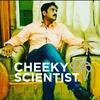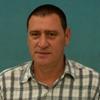Explore all the information on
Aquaculture management
Welcome to the page about Aquaculture management of Engormix; a source of knowledge on Aquaculture management.
Dear members, I would like to invite you all to share your experiences and thoughts on this topic: Freshwater prawn (Machrobrachium rosenbergii) has been studied and cultured for several decades. This species is particularly suited for warm freshwater locations. Recent interest in culture techniques that utilize low inputs and agriculture byproducts to produce freshwater prawns has been expressed. Although competition exists between...
Comments : 14
Recommendations: 0
Introduction Indian giant carps (IMCs), along with fish species such as Catla catla, Labeo rohita and Cirrhinus mrigala, are economically important freshwater fish species widely cultivated in the Indian subcontinent They are highly valued for their meat quality, fast growth rate, and adaptability to various environmental conditions. The cultivation of IMCs plays a crucial role in the aquaculture sector, contributing significantly to food security and livelihoods in the region....
Comments : 0
Recommendations: 1
Introduction Fish or any animal needs an adequate balanced diet that contains all the required necessary essential nutrients to have optimal growth. These nutrient requirements vary from species to species, sex, age, the environment where it lives, different stages of larval development, and the health status of the species. A minimum of 35 to 45 nutrients is required for marine fish. To have the best optimal growth and reduce pollution in the environment a thorough knowledge of...
Comments : 0
Recommendations: 0
Potassium permanganate, KMnO 4 , is a chemical oxidizing agent that will react with any organic matter in a pond including algae, bacteria, fish, particulate and dissolved organic, and organic bottom sediments. It has been used in fish ponds to treat common fish pathogens such as gill parasites and external bacterial and fungal infections. Contrary to some reports, potassium permanganate does not add significant amounts of oxygen to water and can actually decrease dissolved oxygen...
Comments : 22
Recommendations: 3


PRICHEMIN MIX
Priya's PRICHEMIN MIX is a mineral supplement for aquaculture. It consists of a mix of mineral chelats from aminoacids
Suggested link
The World Veterinary Education in Production Animal Health (WVEPAH) is a non-profit organization dedicated to advancing veterinary education and promoting sustainable practices in production animal health. We are excited to present our specialized training...
Comments : 0
Recommendations: 0
Aquaculture, the cultivation of aquatic organisms, is experiencing a technological evolution with the integration of Artificial Intelligence (AI). This dynamic synergy holds the potential to redefine and optimize various aspects of aquaculture, from resource management to environmental sustainability. One key player in this transformative landscape is ChatGPT, a cutting-edge AI language model. In this article, Bhusan Chettri delves into the multifaceted ways in which AI, and specifically...
Comments : 5
Recommendations: 0


PRICHEMIN MIX
Priya's PRICHEMIN MIX is a mineral supplement for aquaculture. It consists of a mix of mineral chelats from aminoacids
Suggested link
Engineering design at Chambo Fisheries, the world’s largest biofloc tank farm for tilapia Battery of eight multi-cohort sequential continuous culture BFT tanks at Chambo Fisheries. Experience raising tilapia in biofloc technology (BFT), where aerial feeding rates are at least four to five orders of...
Comments : 38
Recommendations: 9
Please share your ideas. Is the aquaculture sector motivated to develop more sustainable feed? Can recycled food waste play a larger role here? Is there a strong market desire to lessen reliance on wild-caught fish in fish diets? I understand that this is complicated, but I'd want to hear some feedback.
Thank You,...
Comments : 0
Recommendations: 0


PRICHEMIN MIX
Priya's PRICHEMIN MIX is a mineral supplement for aquaculture. It consists of a mix of mineral chelats from aminoacids
Suggested link
Can anyone help me know whether we can use EDTA to reduce the water hardness of shrimp culture pond? ...
Comments : 31
Recommendations: 1
Aquasaf Tilapia is a program designed to maximise productivity and sustainability of tilapia production. The program addresses some the most pressing challenges of tilapia such as mass mortalities caused by pathogens, low growth patterns that are associated with chronic gut issues, economic losses due to unoptimized feed conversion ratios, while reducing producer’s dependency on antibiotics....
Comments : 4
Recommendations: 3


PRICHEMIN MIX
Priya's PRICHEMIN MIX is a mineral supplement for aquaculture. It consists of a mix of mineral chelats from aminoacids
Suggested link
The growing cost of diseases in tilapia Bacterial, viral and parasitic diseases can disrupt tilapia production regardless of the biological stage, production system and culture intensity. Streptococcosis (caused mainly by different serotypes...
Comments : 0
Recommendations: 1
The Aquaculture Experience Farm in Java operated a hybrid system, based on a careful balance between autotrophic and heterotrophic organisms which gave average outputs of 20 tonnes/ha in early 2013. High water exchange is standard practice to maintain suitable water quality in intensive shrimp production systems. However, environmental and biosecurity issues led farmers to develop methods relying on reduced or...
Comments : 17
Recommendations: 1


PRICHEMIN MIX
Priya's PRICHEMIN MIX is a mineral supplement for aquaculture. It consists of a mix of mineral chelats from aminoacids
Suggested link
Peter Coutteau, Bussiness Unit Director Aquaculture for Nutriad, speaks to us about the challenges of the Aquaculture Industry during Eurotier 2016, in Hannover, Germany....
Comments : 2
Recommendations: 0
Introduction: The aquaculture industry is rapidly growing and is now considered a major contributor in the global food production. To meet the global demand, aquaculture production practices have been intensified to a greater extent both in technological and practical measures. Aquaculture generates considerable amount of wastes, consisting of metabolic by-products, residual food, fecal matters and residues of prophylactic and therapeutic inputs, leading to the deterioration of...
Comments : 1
Recommendations: 4


PRICHEMIN MIX
Priya's PRICHEMIN MIX is a mineral supplement for aquaculture. It consists of a mix of mineral chelats from aminoacids
Suggested link
...
Comments : 5
Recommendations: 3
Introduction In Egypt, shrimp culture has fluctuated progress. Although shrimp culture is profitable, but shrimp disease is still one of the major problems. Shrimp’s origin is from the eastern Pacific waters. In practice of shrimp culture, shrimp farmers often use their habit and experience, including the harvest time ( Nour et al ., 2004). Litopenaeus vannamei is the most important penaeid shrimp species farmed earth ( Alcivar- Warren...
Comments : 1
Recommendations: 2


PRICHEMIN MIX
Priya's PRICHEMIN MIX is a mineral supplement for aquaculture. It consists of a mix of mineral chelats from aminoacids
Suggested link
Introduction Shrimp farming is one of the most important aquaculture practices worldwide. In shrimp-farming operations, one of the primary wastes of concern is nitrogen. The built-up of nitrogenous waste in the form of ammonia, nitrite and nitrate from the shrimp continuously degrade the culture environment. Ammonia is excreted by animals and also arises from decomposing organic solids such as uneaten feed. The excess feed and fecal matter deposited in the bottom of the pond...
Comments : 1
Recommendations: 2
Amir-Antoine Khalil (INVE Aquaculture) gives an overview of nurseries around the world, and discusses infrastructure and models....
Comments : 3
Recommendations: 2


PRICHEMIN MIX
Priya's PRICHEMIN MIX is a mineral supplement for aquaculture. It consists of a mix of mineral chelats from aminoacids
Suggested link
Introduction Global aquaculture production has been steadily increasing over the last decade. Asian countries like Taiwan, Indonesia, Thailand and India have emerged as global leaders in shrimp production. In order to bridge the gap between world demand and supply of shrimp, many countries have undertaken intensive shrimp culture. Disease and production problems vary...
Comments : 15
Recommendations: 4
Sludge formation in pond bottom In the intensive shrimp culture ponds are heavily aerated and it is common practice to position aerators in the comers of ponds to create a circular motion of water. If excessive aeration is used, bottom material is eroded from inside slopes of levees and around the periphery of the pond bottom. Waste products are being produced continuously during shrimp culture in a mixture of gases, liquids, semi-solid and solid...
Comments : 6
Recommendations: 7









